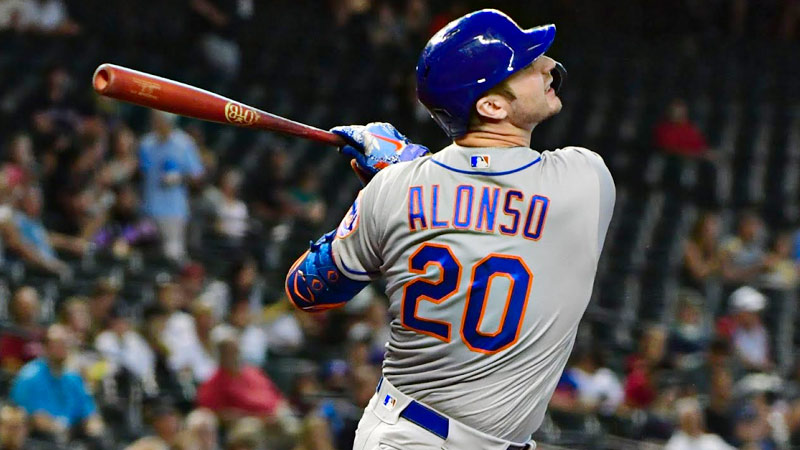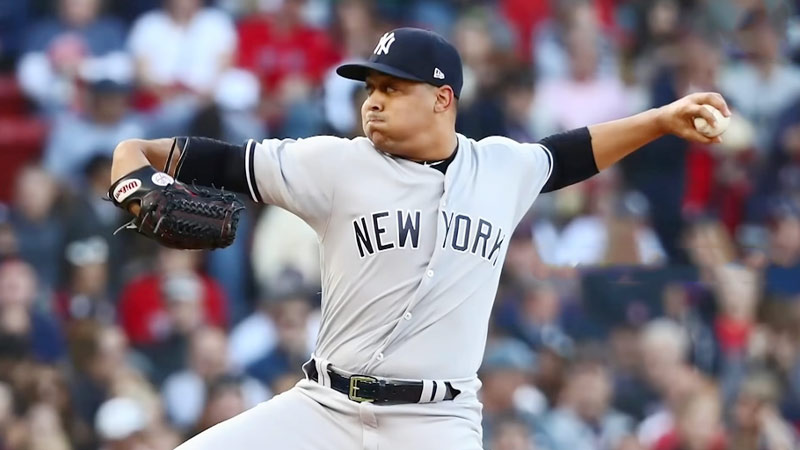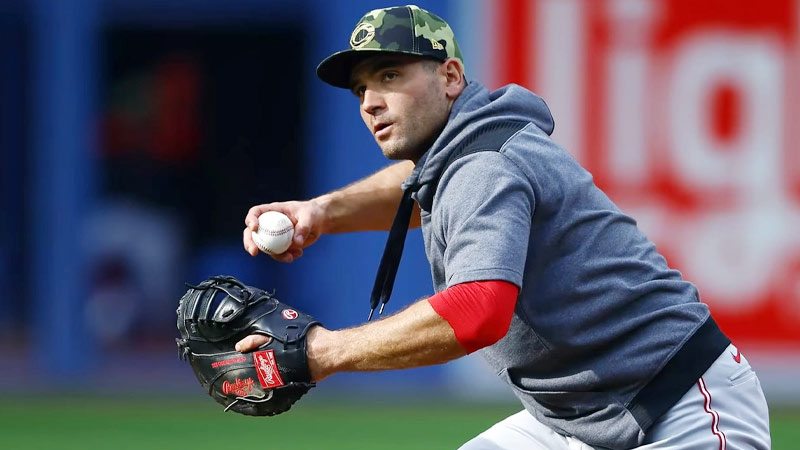Baseball, often referred to as America’s pastime, is more than just a sport, it’s a complex business with a unique system of player compensation.
In the realm of Major League Baseball (MLB), there’s a crucial period in a player’s career known as “pre-arbitration.”
It’s a phase that significantly impacts the trajectory of a player’s career and the financial dynamics of the sport as a whole.
In this blog post, we will delve into what is pre-arbitration in baseball, demystifying the concept and shedding light on its implications.
From limited earning potential to the path to arbitration, we’ll explore what pre-arbitration means for players, teams, and the sport’s landscape.
Whether you’re a die-hard baseball fan or just curious about how the business side of this beloved game works, this is your guide to understanding the game before the game. Best wishes.
What Is Pre-Arbitration in Baseball?
Whether you are a player or spectator, you should learn pre-arbitration meaning MLB. Pre-arbitration in baseball refers to the initial stage of a player’s career, typically during their first three seasons in the Major Leagues.
During this period, players have limited bargaining power and are subject to team-determined salaries, which are often near the league minimum.
This is because players in the pre-arbitration stage have not yet accumulated the requisite service time to become eligible for salary arbitration.
Teams have the authority to set the salaries of pre-arbitration players, which is usually at or just above the league minimum.
These players have limited negotiation leverage, and their contracts are often renewed automatically by the team.
Once a player reaches arbitration eligibility, usually after three years of service time, they can negotiate their salaries more actively and are subject to an arbitration process where an independent panel determines their compensation based on their performance and comparable players.
Pre-Arbitration MLB Eligibility

Pre-arbitration MLB eligibility refers to the stage in a player’s career when they are not yet eligible for salary arbitration, typically encompassing their first three seasons in the Major Leagues.
Here are some key points about pre-arbitration eligibility in MLB:
Service Time
Pre-arbitration eligibility is determined by a player’s accrued service time in the Major Leagues. A player needs to have less than three years of service time to remain in the pre-arbitration stage.
Contract Renewal
During the pre-arbitration years, teams have the discretion to set a player’s salary, as long as it meets the league minimum requirements.
Players often have little say in their compensation, and contracts are unilaterally renewed by the team.
Limited Negotiation Power
Pre-arbitration players have minimal bargaining power when it comes to their salaries. They typically must accept the team’s offer or risk being renewed at a predetermined salary.
Earning Potential
Because salaries for pre-arbitration players are relatively low compared to what they might earn in arbitration or free agency, this stage is often seen as a cost-effective period for teams to develop and assess young talent.
Path to Arbitration
Once a player accumulates three years of service time, they become eligible for salary arbitration, which provides them with more negotiating leverage to secure higher salaries based on their performance and comparable players’ earnings.
MLB Pre-Arbitration Salary

MLB pre-arbitration salaries refer to the compensation that players receive during their initial years in the Major Leagues before they become eligible for salary arbitration.
Here are some key points to understand pre-arbitration salaries in MLB:
Minimum Salary
Pre-arbitration players typically earn salaries that are close to the league minimum.
The league minimum is set collectively through negotiations between the players’ union and the league and is subject to periodic adjustments. It is often the baseline for pre-arbitration salaries.
Team Control
Teams have significant control over pre-arbitration player salaries during this stage.
They can determine the salaries for players in their pre-arbitration years, which are usually near the league minimum, and often without much room for negotiation.
Performance Impact
Players’ salaries in the pre-arbitration stage may not directly reflect their on-field performance.
Instead, salaries are often based on the team’s internal assessment of a player’s value, service time, and positional role.
Renewal or Negotiation
Typically, teams can choose to either renew a pre-arbitration player’s contract at a set salary or negotiate a salary with them.
However, players have limited bargaining power at this stage, as their salaries are usually relatively low and may not yet reflect their full potential.
Path to Arbitration
Pre-arbitration salaries are an essential stepping stone in a player’s career progression.
Once a player accumulates three years of service time, they become eligible for salary arbitration, where they can actively negotiate their compensation based on their performance and comparable players’ earnings, providing them with more significant earning potential.
Benefits and Challenges of Pre-Arbitration Baseball for Players
Check out the benefits and challenges of pre-arbitration baseball for players in the next phase.
Benefits of Pre-Arbitration Baseball for Players
Opportunity for Development

Pre-arbitration years provide players with the chance to showcase their skills and establish themselves in the Major Leagues.
They can gain experience and improve their performance, setting the stage for potentially more lucrative contracts in the future.
Guaranteed Income
While pre-arbitration salaries are relatively modest, they still provide players with a guaranteed income, which is especially important for young athletes who may not have secured long-term financial stability.
Early Career Stability
Players in the pre-arbitration stage often enjoy stability in terms of team affiliation and playing time. Teams are more likely to retain and invest in young talent, offering players a platform to prove themselves.
Team Investment
Teams have a financial incentive to develop and nurture their pre-arbitration players. This can lead to better coaching, training, and support systems for young talents, contributing to their long-term success.
Challenges of Pre-Arbitration Baseball for Players
Limited Earnings
Pre-arbitration players receive salaries that are typically close to the league minimum, which can be significantly lower than their true market value. This limits their earning potential during the early years of their careers.
Lack of Negotiation Power
Pre-arbitration players have limited bargaining power when it comes to their salaries. Teams often set their earnings without much room for negotiation, leaving players with little say in their compensation.
Uncertain Future
While the pre-arbitration years offer stability to some extent, players can face the uncertainty of not knowing if they will be retained by their team or released, which can affect their long-term career prospects.
Short Window
Pre-arbitration players have a limited window of opportunity to make their mark and advance to more lucrative stages in their careers.
Injuries or performance slumps during this period can have lasting consequences on their earning potential and overall career trajectory.
Pre-Arbitration MLB vs. Arbitration MLB
Check out Pre-Arbitration MLB vs. Arbitration MLB below;
Compensation Structure
- Pre-Arbitration MLB: Players in the pre-arbitration stage typically earn salaries that are near the league minimum, with limited bargaining power. Their compensation is largely determined by the team, often unilaterally.
- Arbitration MLB: In arbitration, players have more control over their compensation. They can negotiate with their team or go through an arbitration process where an independent panel determines their salary based on performance and comparable player salaries. This stage often leads to more substantial earnings.
Service Time
- Pre-Arbitration MLB: Pre-arbitration eligibility is determined by a player’s service time, usually their first three seasons in the Major Leagues. They have limited control over their career path during this period.
- Arbitration MLB: Players become eligible for salary arbitration after three years of service time. This stage provides them with more autonomy and allows them to influence their contract terms and earnings.
Bargaining Power
- Pre-Arbitration MLB: Pre-arbitration players have limited bargaining power when it comes to their salaries and contract terms. They often must accept the team’s offer or face having their contract renewed at a predetermined salary.
- Arbitration MLB: Players in the arbitration stage have more negotiating leverage and can actively participate in contract negotiations. They can use their performance and market value to secure better deals.
Career Longevity
- Pre-Arbitration MLB: The pre-arbitration stage represents the early phase of a player’s career, and their future in the league is less certain. Injuries or performance struggles during this period can impact their long-term prospects.
- Arbitration MLB: Arbitration-eligible players have typically proven themselves in the league and have a more stable presence. They have a clearer path toward long-term career sustainability and potentially more significant earnings.
Team Approach
- Pre-Arbitration MLB: Teams often focus on player development during this stage, offering stability and opportunities for young talent to grow and contribute to the team’s success.
- Arbitration MLB: Teams may approach arbitration-eligible players with a more business-oriented mindset, balancing performance and financial considerations as they negotiate contracts. This stage involves more active decision-making about a player’s role on the team.
FAQs
What is pre-arbitration in baseball?
Pre-arbitration in baseball refers to the initial stage of a player’s career when they are not yet eligible for salary arbitration.
During this period, which typically spans the first three years of a player’s major league service, their salary is determined by the team and is often at or near the league minimum.
What does pre-arbitration mean in baseball?
Pre-arbitration in baseball signifies the phase in a player’s career when they have not yet reached the point where they can negotiate their salary through arbitration.
It’s usually the first three years of a player’s major league tenure, during which their compensation is controlled by the team.
What does pre-arb mean in baseball?
“Pre-arb” is a shortened term for “pre-arbitration” in baseball. It denotes the initial years of a player’s major league career when their salary is determined by the team, and they are not eligible for arbitration.
This phase typically lasts for the first three years of a player’s tenure.
How is pre-arbitration different from arbitration in baseball?
Pre-arbitration and arbitration in baseball differ in terms of salary negotiation. Pre-arbitration occurs in a player’s early career years when the team unilaterally sets their salary.
In contrast, arbitration is a later stage where players and teams can present salary proposals to an arbitrator if they can’t agree on terms.
What happens to a player’s salary after the pre-arbitration phase in baseball?
After the pre-arbitration phase, players become eligible for salary arbitration, typically in their fourth to sixth years of major league service.
During arbitration, players and teams can present arguments to an impartial arbitrator who decides the player’s salary for that season, based on their performance and market value.
Wrapping Up
Pre-arbitration in baseball is more than a mere technicality; it’s a crucial phase in a player’s career journey and a cornerstone of the sport’s financial structure.
For players, it represents a phase of limited earning potential but also a platform for development and stability. For teams, it’s an opportunity to nurture and assess young talent while controlling costs.
As we’ve explored the differences between pre-arbitration and arbitration in MLB, it’s clear that the latter stage offers players more control over their salaries and career paths.
This transition is significant not only for individual players but also for the dynamic landscape of professional baseball.
Pre-arbitration is a vital step toward comprehending the intricacies of player compensation and career progression in baseball, a sport where success is measured both by what happens on the field and what happens behind the scenes.







